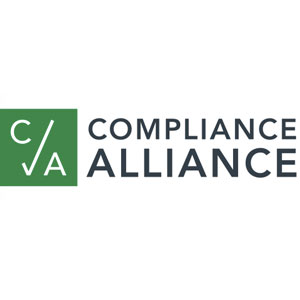With technology changing and growing at what seems like the speed of light, banking laws and regulations can struggle to keep up. All too often, we skim across various regulations that revolve around paper transactions or technology that barely exists. One area of banking that can be especially impacted by the inability to keep up with the ever-changing world of technology or modernization is the Bank Secrecy Act (BSA). The BSA has been around since 1970 when Congress passed it as the first set of laws to combat money laundering in the United States. Except for the amendment to incorporate the provisions of the USA PATRIOT Act, there haven’t been many significant changes to the BSA until recent years. The BSA must be revised and revamped to meet the challenges and technological advances of the times to fulfill its purpose of fighting money laundering and financial crimes as effectively today as it did 50 years ago.
Background
Over the past several years, the Financial Crimes Enforcement Network (FinCEN) has placed a great deal of focus on reforming and modernizing the BSA. The objective began years earlier in 2010 when the Bank Secrecy Act Information Technology (IT) Modernization Program was developed to provide a modernized IT foundation to collect, store, safeguard, analyze and share data collected pursuant to the expectation of the BSA. Modernization remains a critical component of government efforts to ensure transparency among U.S. financial systems to detect and deter crime, strengthen national security, and achieve economic stability and growth. More recently, the call for modernization returns to the forefront as FinCEN sets out to “reexamine the BSA regulatory framework and the broader [Anti-Money Laundering] regime.”
In 2019, the House Financial Services Committee issued proposed bills related to the Bank Secrecy Act and Anti-Money Laundering and Combating the Financing of Terrorism (CFT) laws. One of the proposed bills was set to reform the BSA/AML in an effort to strengthen and modernize the program by focusing on information sharing, resource sharing and technological innovation. Congress has also considered various proposals which could restructure and modernize the BSA/AML. The U.S. Department of Treasury issued its 2020 National Strategy for Combating Terrorist and Other Illicit Financing, which called for AML modernization by leveraging new technologies coupled with innovative compliance approaches.
In 2019, the House Financial Services Committee issued proposed bills related to the Bank Secrecy Act and Anti-Money Laundering and Combating the Financing of Terrorism (CFT) laws. One of the proposed bills was set to reform the BSA/AML in an effort to strengthen and modernize the program by focusing on information sharing, resource sharing and technological innovation.
Modernizing the BSA
Modernization seems to be the frequent theme of the Bank Secrecy Act. Much of this theme can be credited to the former director of FinCEN, Kenneth Blanco, and his focus on the reform and modernization of the BSA/AML. The reform and modernization of the BSA revolve around a collection of Advanced Notice of Proposed Rulemaking (ANPR), Final Rules and new or amended laws. As part of the reform efforts, FinCEN issued a Final Rule on Sept. 14, 2020, which extended BSA/AML requirements to financial institutions lacking a federal functional regulator. The Final Rule required these institutions to develop and implement an Anti-Money Laundering program, establish a written Customer Identification Program, and verify the identity of beneficial owners. The Final Rule closed a regulatory gap between financial institutions, brought about consistent reporting requirements and decreased exploitation vulnerability.
Just a couple of days later, on Sept. 16, 2020, FinCEN issued an Advanced Notice of Proposed Rulemaking (ANPR), one of the first major efforts in broadening and modernizing the regulatory framework of the BSA and the broader national AML regime. The intent is to provide greater flexibility in allocating resources and a greater alignment of priorities across the financial industry and government to enhance the effectiveness and efficiency of anti-money launder (AML) programs.
It would require financial institutions to have an AML compliance program, including a risk assessment as part of their program. In addition, the ANPR clearly outlines the expectations that financial institutions must meet when developing an “effective and reasonably designed” program. Such programs should: (1) assess and manage risk as informed by a financial institution’s own risk assessment process, including consideration of AML priorities to be issued by FinCEN consistent with the proposed amendments; (2) provide for compliance with BSA requirements; and (3) provide for the reporting of information with a high degree of usefulness to government authorities. The overall goal of the 2020 Final Rule is to enhance the effectiveness of anti-money laundering programs as it seeks to modernize the current BSA/AML. As most financial institutions already have risk assessments as part of their BSA/AML program, the ANPR may not necessarily add any new expectations but rather make an industry best practice into a regulatory requirement.
BSA/AML Reform continued Jan. 1, 2021, when the Senate voted to override President Trump’s veto of the National Defense Authorization Act (NDAA), which the House had previously overridden Dec. 28, 2020. The NDAA may provide the most significant and comprehensive set of reforms to the BSA/AML since the USA PATRIOT Act of 2001. Some of the most significant reforms include expanding the ability to share Suspicious Activity Report (SAR), streamlining SAR and Currency Transaction Report (CTR) and modifying the BSA/AML program. It also reincorporates an emphasis on risk-based approaches to AML program requirements.
The Anti-Money Laundering Act of 2020, part of the NDAA 2021, included the Corporate Transparency Act (CTA) and was effective as law with Congress’ override of President Trump’s veto of the NDAA Jan. 1, 2021. The CTA has been many years in the making and is intended to be fully implemented by 2023, including creating a database of beneficial ownership information with FinCEN. The CTA establishes a new framework for reporting and disclosing beneficial ownership information and shifts information collection from financial institutions to reporting companies, modernizing and streamlining much of the BSA/AML expectations.
The focus on reform and modernization seems to be everywhere we turn as it becomes intertwined in new laws. The efforts and purpose of the Bank Secrecy Act and Anti-Money Laundering remain unchanged. The world and technology around us are changing, demanding modernization and reform become priorities. Financial institutions must remain knowledgeable of the regulatory and legal changes and embrace the modernization and reform which impacts their programs.








